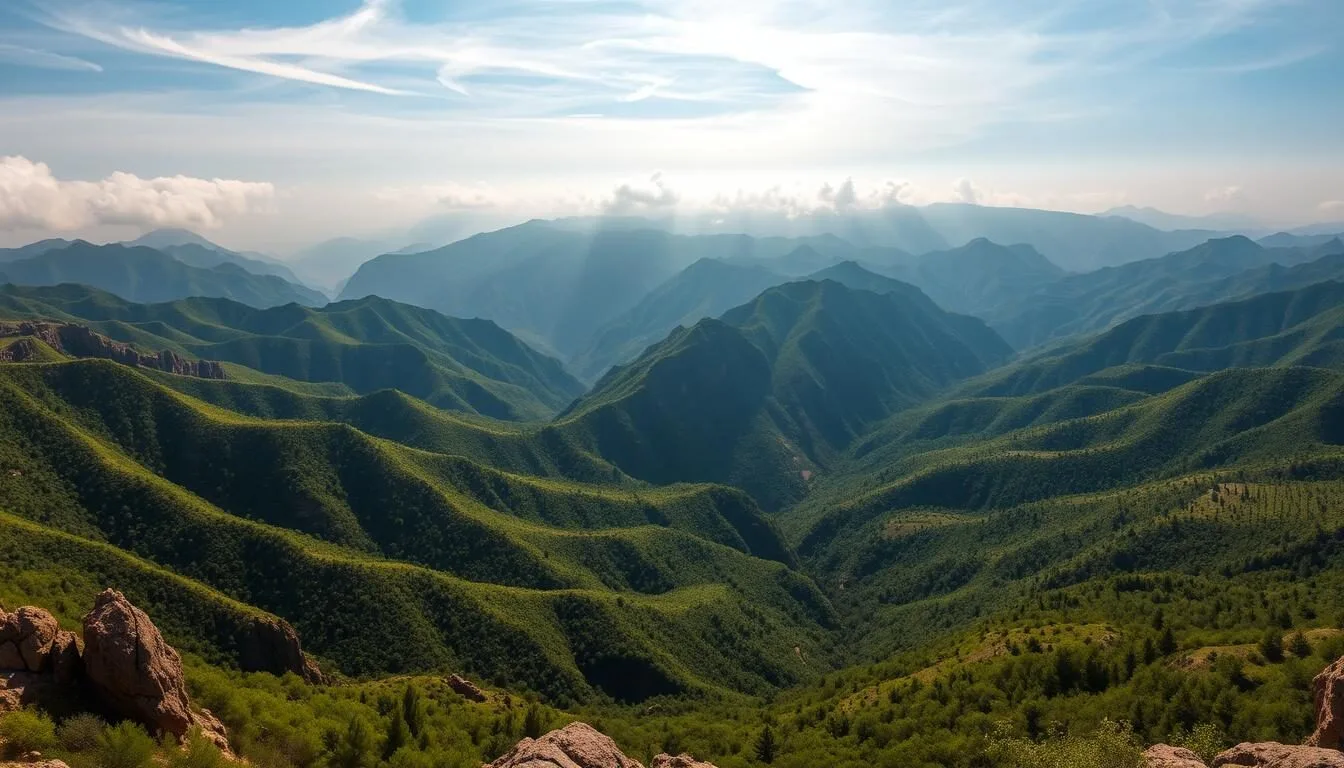Did you know that Aseer National Park spans an impressive 1,600 square kilometers (618 sq mi) and is home to Saudi Arabia’s only cloud forest? This verdant oasis, nestled in the southwestern corner of the Kingdom, offers a striking contrast to the desert landscapes typically associated with Saudi Arabia. With its misty mountains, lush valleys, and rich biodiversity, Aseer National Park has rightfully earned its nickname as the “Arabian Alps.”
Exploring the Green Heart of Saudi Arabia
Established in 1981, Aseer National Park stands as Saudi Arabia’s first national park and remains one of its most ecologically diverse protected areas. The park stretches from the shores of the Red Sea to the towering heights of the Sarawat Mountains, creating a remarkable range of ecosystems within a single protected area.
What makes Aseer truly special is its unique climate. While much of Saudi Arabia experiences extreme desert conditions, Aseer enjoys relatively cool temperatures and receives more rainfall than any other part of the country. This climate has fostered the growth of dense juniper forests, terraced farms, and vibrant wildflower meadows that burst into color during spring.
For travelers seeking natural beauty, outdoor adventures, or a glimpse into traditional Saudi culture, Aseer National Park offers experiences that can’t be found anywhere else in the Arabian Peninsula.
Getting There & Planning Your Journey
The main gateway to Aseer National Park is Abha International Airport, which offers regular flights from major Saudi cities including Riyadh and Jeddah. International travelers will typically connect through one of these hubs before reaching Abha.
Ready to Start Your Aseer Adventure?
Find the best flight deals to Abha International Airport and begin your journey to Saudi Arabia’s green paradise.
From Abha, the park’s various entry points are accessible by car, with the main gates located approximately 30-60 minutes from the city center. The drive itself offers spectacular views as you ascend into the mountains.
For those preferring to travel by land, Abha is connected to major Saudi cities by well-maintained highways. The journey from Jeddah takes approximately 7-8 hours by car, while from Riyadh it’s about a 10-hour drive.
Explore at Your Own Pace
Rent a car to discover all the hidden gems of Aseer National Park and its surrounding areas.
Best Time to Visit & Weather Tips
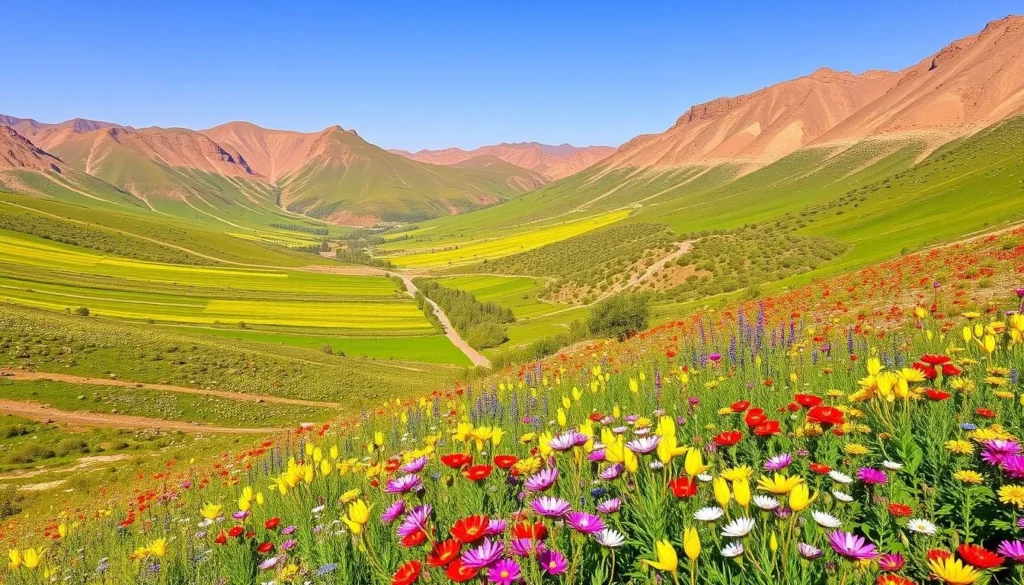
Aseer National Park experiences a climate quite unlike the rest of Saudi Arabia, with four distinct seasons and significantly cooler temperatures year-round due to its elevation.
Recommended Seasons to Visit
Spring (March-May)
Perhaps the most magical time to visit Aseer. Temperatures range from 15-25°C (59-77°F), and the landscape transforms with wildflowers and lush greenery. Rainfall is moderate, creating ideal conditions for hiking and outdoor activities.
Fall (September-November)
Another excellent time to visit with temperatures similar to spring, ranging from 14-24°C (57-75°F). The crowds are typically smaller than in summer, and the weather is stable with clear skies perfect for photography.
Seasons to Avoid or Take Precautions
Summer (June-August)
While still cooler than the rest of Saudi Arabia at 20-30°C (68-86°F), summer brings the largest crowds as domestic tourists escape the extreme heat of other regions. Book accommodations well in advance if visiting during this period.
Winter (December-February)
Temperatures can drop to 5-15°C (41-59°F), with occasional frost at higher elevations. Some trails may be closed after heavy rainfall, but winter offers unique misty landscapes and the clearest views of the year.
Weather Tip: Due to the elevation changes within the park, temperatures can vary significantly between different areas. Pack layers even in summer, as evenings can be cool in the mountains.
Getting Around Locally
Navigating Aseer National Park and its surroundings requires some planning, as public transportation options are limited within the park itself.
Transportation Options
- Rental Car: The most flexible option for exploring the park at your own pace. SUVs are recommended for accessing some of the more remote areas with unpaved roads.
- Taxis: Available in Abha and can be hired for day trips to the park, though this can be costly for extended exploration.
- Guided Tours: Many tour operators in Abha offer day trips or multi-day excursions to the park with transportation included.
- Cable Cars: The park features cable car systems that connect certain areas, offering both transportation and spectacular views.
Within the park, many attractions are connected by well-marked hiking trails. The park administration has established designated paths of varying difficulty levels, from easy walks suitable for families to challenging treks for experienced hikers.
Discover Aseer’s Hidden Treasures
Book a guided tour with local experts who know the best spots and trails in Aseer National Park.
Where to Stay
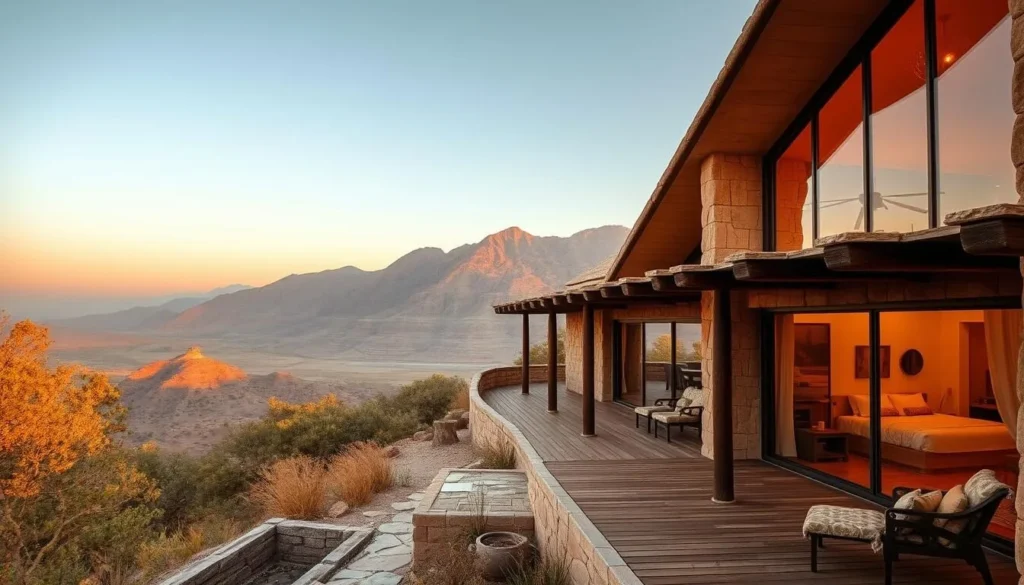
While there are no hotels within the boundaries of Aseer National Park itself, the surrounding areas offer a range of accommodation options to suit different preferences and budgets.
Accommodation Options
Abha City Hotels
The provincial capital offers the widest selection of hotels, from international chains to local establishments. Staying in Abha provides easy access to urban amenities while still being just 30-60 minutes from the park.
Recommended: Blue Inn Hotel, Abha Palace Hotel
Mountain Resorts
Several resorts are located in the mountains surrounding the park, offering stunning views and a more immersive natural experience. These properties often feature traditional architectural elements.
Recommended: Nourban Resort in Tanomah
Camping Options
For the adventurous traveler, the park has over 67 designated camping areas equipped with basic facilities including restrooms, picnic tables, and parking. Camping permits may be required.
Best Areas: Al Soudah and Dalgan Park campgrounds
Find Your Perfect Stay
Browse accommodations near Aseer National Park and secure the best rates for your visit.
Dining & Local Cuisine

The Aseer region offers a unique culinary experience that reflects its distinct cultural heritage and agricultural bounty. The cooler climate and fertile soil allow for the cultivation of fruits and vegetables not commonly found elsewhere in Saudi Arabia.
Must-Try Local Dishes
- Mandi: A traditional dish of rice and meat (usually lamb) cooked in an underground clay oven, giving it a distinctive smoky flavor.
- Harees: A hearty porridge made from wheat and meat, slow-cooked until the ingredients blend together.
- Jareesh: Crushed wheat cooked with meat and vegetables, often flavored with local herbs.
- Aseeri Honey: The region is famous for its high-quality honey, produced from the nectar of mountain flowers and juniper trees.
- Mountain Coffee: Local coffee is often prepared with cardamom and served with dates or other dried fruits.
Where to Eat
Within the park, dining options are limited to picnic areas where visitors can bring their own food. However, the surrounding towns offer various dining experiences:
Restaurants in Abha
The city offers the widest range of dining options, from traditional Saudi restaurants to international cuisine. Many hotels also have in-house restaurants serving both local and international dishes.
Recommended: Al Hatab Restaurant for authentic Aseeri cuisine, Caffe Aroma for coffee and light meals with mountain views.
Local Markets
The Tuesday Market in Abha and various village markets throughout the region offer fresh local produce, honey, and traditional foods. These markets provide an authentic glimpse into local culinary traditions.
Tip: Visit Al Muftaha Village for traditional bread baked in clay ovens and served with local olive oil.
Attractions, Sightseeing & Activities
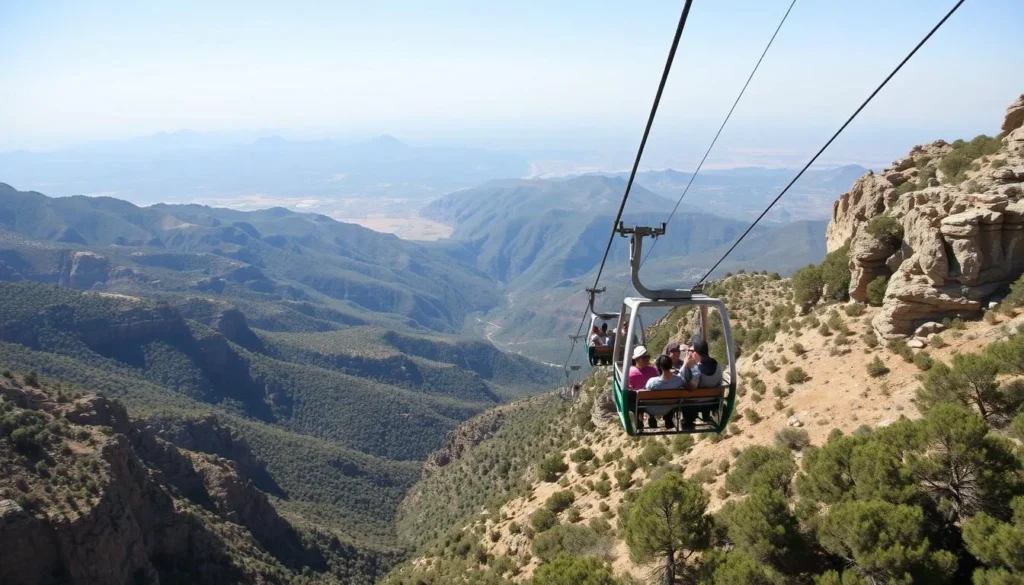
Top Natural Attractions
Jabal Soudah
Saudi Arabia’s highest peak at 3,000 meters (9,843 feet) above sea level. The summit offers breathtaking panoramic views of the surrounding mountains and valleys, often shrouded in mist. The area features well-maintained viewing platforms and walking trails.
Al Habala Hanging Village
A historic village built into the side of a cliff, once accessible only by rope ladders (habala means “rope” in Arabic). Today, visitors can reach this remarkable site via cable car, exploring the stone houses and learning about the unique lifestyle of its former inhabitants.
Wadi Darbat
A lush valley with seasonal waterfalls, streams, and dense vegetation. During the rainy season, the valley transforms into a green paradise with flowing water and blooming wildflowers, creating one of the most picturesque landscapes in the park.
Cultural Attractions
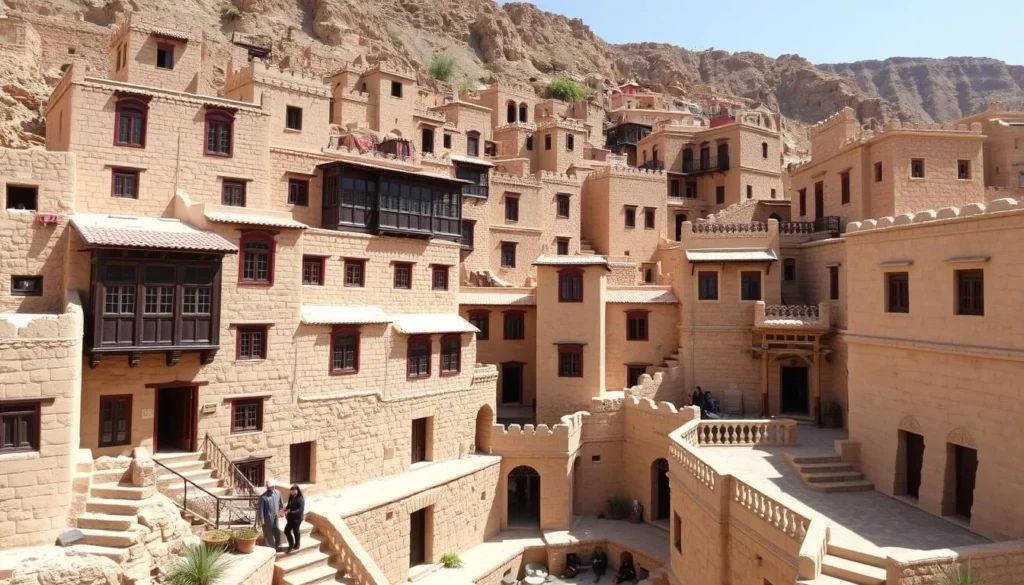
Rijal Almaa Heritage Village
A UNESCO World Heritage site featuring remarkably preserved stone buildings that showcase traditional Aseeri architecture. The village houses a museum displaying artifacts, traditional clothing, and historical items that tell the story of the region’s rich cultural heritage.
Al Muftaha Art Village
Located in Abha, this cultural center showcases the work of local artists inspired by the region’s landscapes and traditions. Visitors can view paintings, sculptures, and traditional crafts, often with the opportunity to meet the artists themselves.
Experience Aseer’s Cultural Wonders
Book guided tours to Rijal Almaa, Al Habala Village, and other cultural highlights of the region.
Sports, Nature & Outdoor Experiences
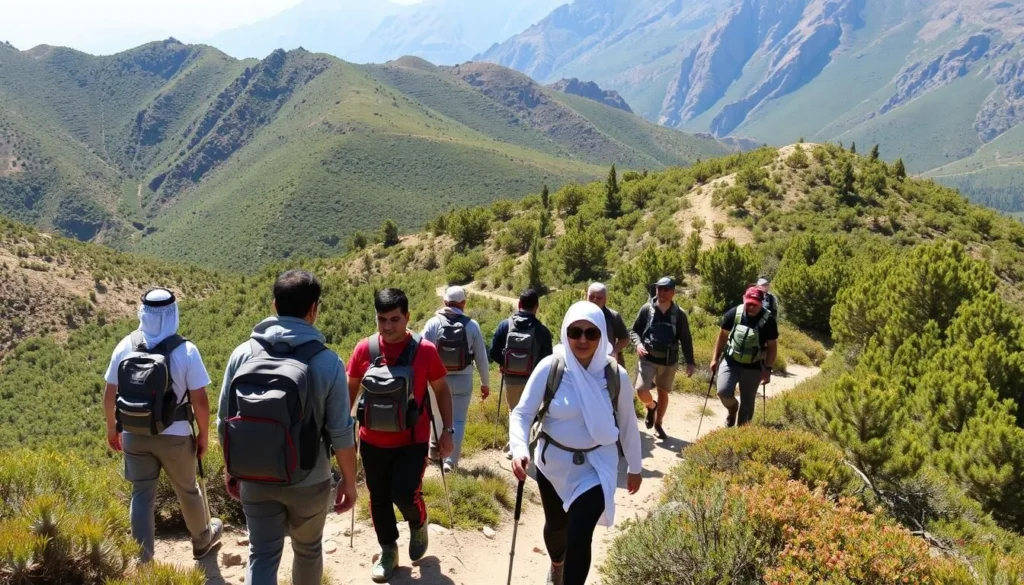
Outdoor Activities
Hiking & Trekking
The park features numerous hiking trails ranging from easy walks to challenging multi-day treks. The Jabal Soudah trail (15 km) offers spectacular views as it winds through juniper forests and mountain meadows. For a more challenging experience, the Gurun Historic Route follows ancient paths once used by local tribes.
Mountain Biking
Designated mountain biking trails traverse the varied terrain of valleys and slopes. These routes are suitable for both experienced cyclists and beginners, with bike rentals available in Abha. The best season for mountain biking is during the cooler months from October to April.
Birdwatching & Wildlife
Aseer National Park is home to over 300 species of animals and birds, including the endangered Arabian leopard, hyraxes, and the Asir magpie (found only in these mountains). The park has designated observation areas and environmental observatories for wildlife enthusiasts.
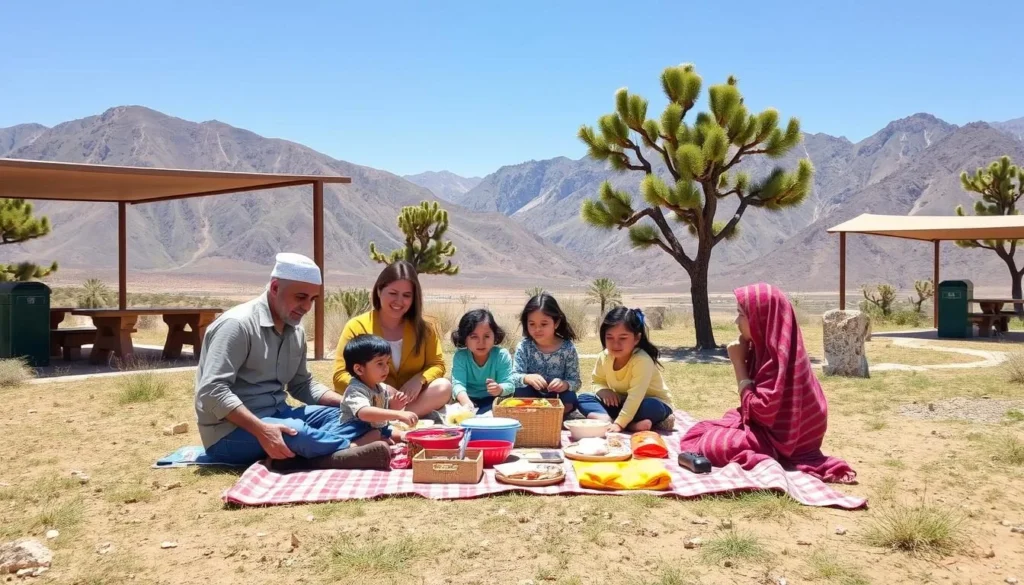
Family-Friendly Activities
Cable Car Rides
The park features several cable car systems that offer breathtaking aerial views without the physical exertion of hiking. The most popular is the one connecting Jabal Soudah to the valleys below, spanning several kilometers and providing spectacular photo opportunities.
Picnic Areas
Throughout the park, there are 67 well-maintained picnic areas equipped with tables, barbecue facilities, and restrooms. Many of these areas offer stunning views and are ideal for family gatherings. The Al Soudah and Dalgan Park areas are particularly popular for day visits.
Adventure Awaits in Aseer
Book guided hiking tours, mountain biking excursions, or wildlife watching experiences with expert local guides.
Safety, Etiquette & Local Customs
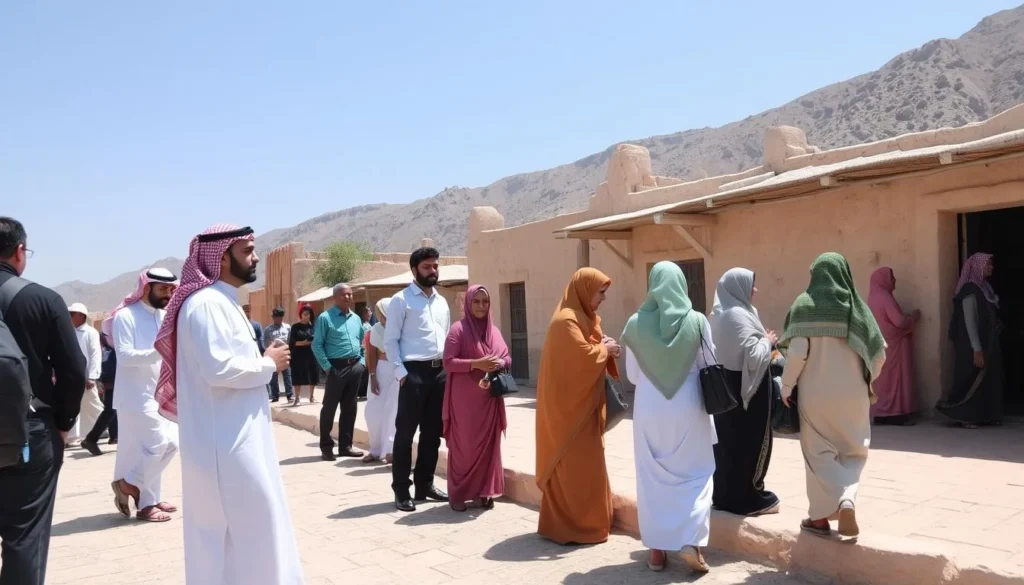
Safety Considerations
- Weather Awareness: Mountain weather can change rapidly. Check forecasts before heading out and be prepared for sudden temperature drops or rainfall, especially at higher elevations.
- Hiking Precautions: Stay on marked trails, carry sufficient water, and inform someone of your planned route and expected return time when embarking on longer hikes.
- Wildlife: While dangerous encounters are rare, maintain a safe distance from all wildlife. The Arabian leopard is extremely rare but potentially dangerous if encountered.
- Sun Protection: Despite cooler temperatures, the sun can be intense at high altitudes. Wear sunscreen, sunglasses, and a hat, particularly during midday hours.
Cultural Etiquette
Saudi Arabia has undergone significant social reforms in recent years, but visitors should still respect local customs and traditions, particularly in rural areas like Aseer:
Dress Code
While strict dress codes have been relaxed, modest attire is still appreciated. Men should wear long pants in public areas, and women should avoid very short shorts or sleeveless tops. When visiting villages or cultural sites, more conservative dress is recommended.
Photography
Always ask permission before photographing local people, particularly women. Some cultural sites may have restrictions on photography, so look for signs or ask guides about local policies.
Ramadan Considerations: If visiting during the holy month of Ramadan, be aware that many restaurants may be closed during daylight hours, and eating, drinking, or smoking in public during fasting hours is discouraged.
Practical Travel Tips
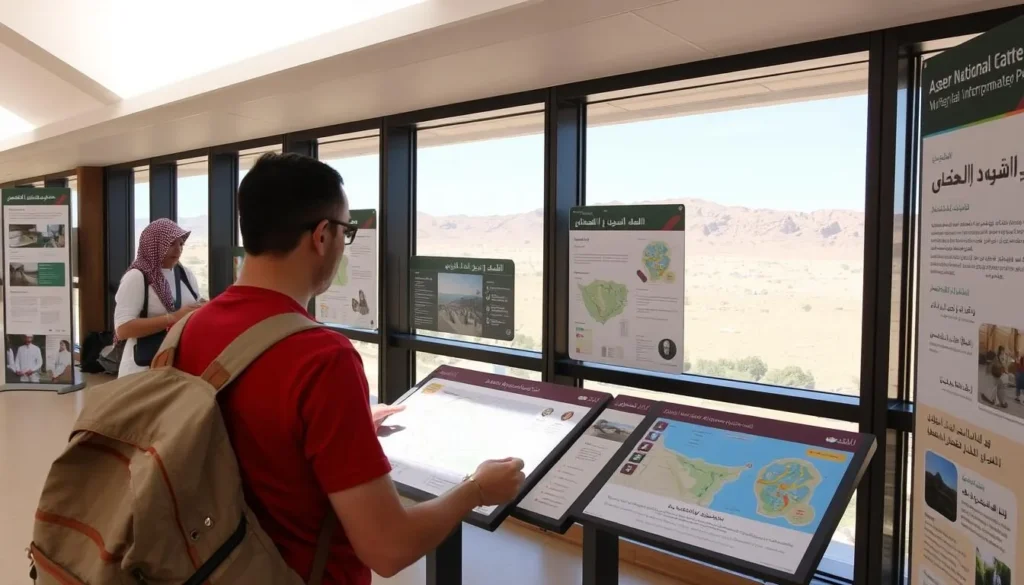
Essential Information
Language
Arabic is the official language, but English is widely understood in tourist areas and hotels. Learning a few basic Arabic phrases is appreciated by locals. In remote villages, Arabic may be the only language spoken.
Currency & Payments
The Saudi Riyal (SAR) is the local currency. Major hotels and restaurants accept credit cards, but smaller establishments and markets may only accept cash. ATMs are readily available in Abha but may be limited in smaller towns.
Connectivity & Navigation
Mobile & Internet
Mobile coverage is generally good in populated areas and along main roads, but may be limited in remote parts of the park. Consider purchasing a local SIM card upon arrival for better connectivity and data rates.
Navigation
While major attractions are well-signposted, having offline maps downloaded is recommended for hiking trails and remote areas. The park administration provides maps at visitor centers, but these may not be comprehensive for all areas.
Packing Essentials
- Layered Clothing: Due to temperature variations between day and night, and at different elevations.
- Hiking Boots: For exploring trails and uneven terrain.
- Rain Jacket: Particularly during winter and spring months.
- Power Bank: For recharging devices during long days outdoors.
- Reusable Water Bottle: To stay hydrated while reducing plastic waste.
- First Aid Kit: Basic supplies for minor injuries or ailments.
Experience the Magic of Aseer National Park
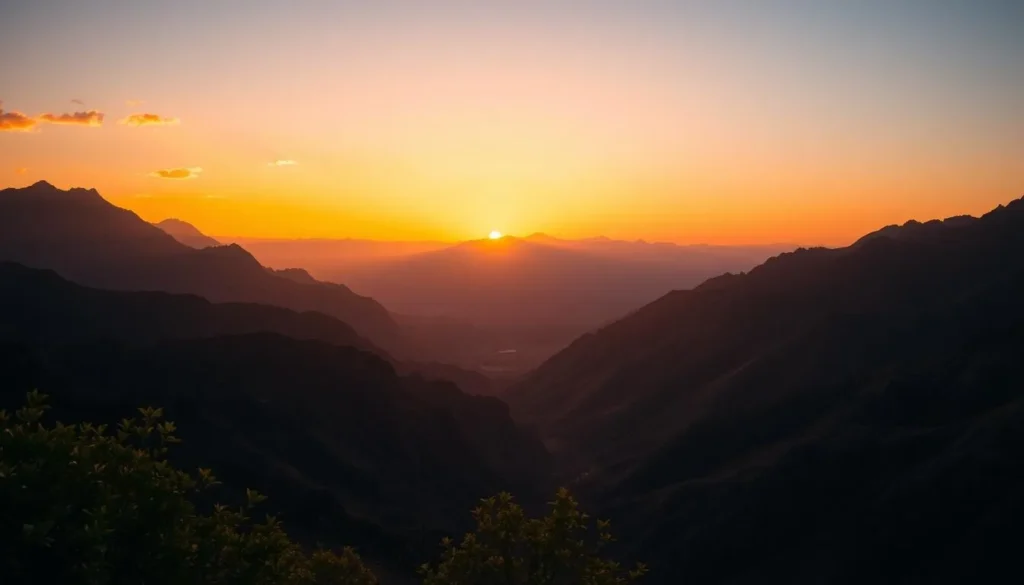
Aseer National Park represents a side of Saudi Arabia that few international travelers have discovered. With its cool mountain climate, lush landscapes, and rich cultural heritage, it offers experiences that challenge preconceptions about the Kingdom.
Whether you’re hiking through juniper forests, exploring ancient villages, or simply enjoying the spectacular views from Jabal Soudah, Aseer rewards visitors with memories that will last a lifetime. As Saudi Arabia continues to open its doors to international tourism, this green jewel in the country’s crown stands ready to welcome those seeking natural beauty and authentic cultural experiences.
Plan your visit to coincide with the ideal seasons of spring or fall, take time to engage with local communities, and prepare to be amazed by the “Arabian Alps” – a destination that deserves a prominent place on any nature lover’s bucket list.
Ready to Explore Saudi Arabia’s Green Paradise?
Start planning your unforgettable journey to Aseer National Park today!
The above is subject to change.
Check back often to TRAVEL.COM for the latest travel tips and deals.
